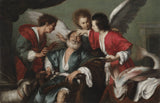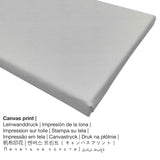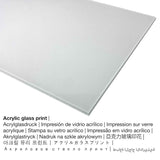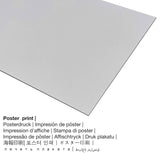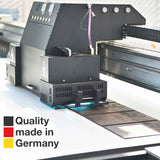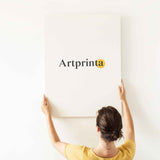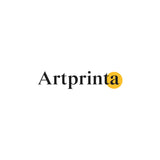Bernardo Strozzi, 1625. gads - Tobita dziedināšana - tēlotājas mākslas druka
PVN iekļauts. Piegāde aprēķināta Pie izrakstīšanās
Mākslas darbs The Healing of Tobit no itāļu gleznotāja Bernardo Stroci kā jūsu unikālo mākslas darbu
The Healing of Tobit is a painting created by Bernardo Strozzi. The painting has the following size of Framed: 57,2 x 80 x 10,2 cm (22 1/2 x 31 1/2 x 4 in); Unframed: 42,7 x 65,5 cm (16 13/16 x 25 13/16 in) and was painted with the medium eļļa uz koka. Turklāt šo mākslas darbu var apskatīt šeit Klīvlendas mākslas muzejs collection - the museum is one of the leading museums worldwide that builds, preserves, studies, and shares its outstanding collections of art from all periods and parts of the world, generating new scholarship and understanding, while serving as a social and intellectual hub for its community. The klasiskā māksla publiski pieejamais mākslas darbs tiek nodrošināts ar pieklājību no Klīvlendas mākslas muzejs. : John L. Severance Fund and Mr. and Mrs. William H. Marlatt Fund. What is more, the alignment is in ainava formāts with a ratio of 3 : 2, which implies that the length is 50% longer than the width. Bernardo Strozzi was a painter from Italy, whose artistic style can be attributed primarily to Baroque. The European painter lived for 83 years - born in the year 1581 Dženovā, Dženovas provincē, Ligūrijā, Itālijā un nomira 1664. gadā.
Produktu materiāli, no kuriem mūsu klienti var izvēlēties
We offer a range of different materials and sizes for every product. You can pick your preferred material and size among the choices:
- Audekls: A canvas print is a printed canvas mounted on a wood frame. Your printed canvas of this work of art will let you turn your into a large artpiece like you know from galleries. Canvas prints are relatively low in weight, which implies that it is easy to hang your Canvas print without the support of additional wall-mounts. A canvas print is suited for any kind of wall.
- Plakāts (audekla materiāls): A poster print is a printed sheet of canvas with a granular surface structure. A poster print is appropriate for placing the art copy using a customized frame. Please bear in mind, that depending on the absolute size of the poster we add a white margin of approximately 2-6cm round about the artwork, which facilitates the framing.
- Alumīnija dibondraksts: An Aluminium Dibond print is a material with an outstanding depth, creating a modern look thanks to a surface , which is not reflective. The colors of the print are luminous and vivid in the highest definition, fine details appear clear and crisp, and the print has a a matte look you can literally feel.
- Drukāt uz akrila stikla: The acrylic glass print, often denoted as a print on plexiglass, will turn the original artwork into magnificient décor. Further, the acrylic glass print makes a great alternative to aluminium or canvas art prints.
Legal disclaimer: We try everything in order to describe our art products in as much detail as possible and to showcase them visually on the different product detail pages. Although, some tone of the print products and the printing can diverge marginally from the presentation on the monitor. Depending on your screen settings and the nature of the surface, color pigments can unfortunately not be printed as exactly as the digital version shown here. Because all our art reproductions are processed and printed manually, there might as well be minor variations in the size and exact position of the motif.
Strukturēta raksta informācija
| Drukas produkta tips: | mākslas darbs |
| Pavairošana: | reproducēšana digitālā formātā |
| Ražošanas process: | UV tiešā druka (digitālā druka) |
| ražošana: | izgatavots Vācijā |
| Krājuma veids: | pēc pieprasījuma ražošanu |
| Produkta lietošana: | galerijas siena, mājas dizains |
| Orientācija: | ainavas formāts |
| Aspect ratio: | garums: platums - 3: 2 |
| Malu attiecības nozīme: | garums ir par 50% garāks nekā platums |
| Pieejamie reprodukcijas materiāli: | audekla apdruka, metāla apdruka (alumīnija dibons), plakāta druka (audekla papīrs), akrila stikla apdruka (ar īstu stikla pārklājumu) |
| Audekla drukas (audekls uz nestuvju rāmja) izmēru opcijas: | 30x20cm - 12x8 ", 60x40cm - 24x16", 90x60cm - 35x24 ", 120x80cm - 47x31", 150x100cm - 59x39 " |
| Akrila stikla apdruka (ar reālu stikla pārklājumu): | 30x20cm - 12x8 ", 60x40cm - 24x16", 90x60cm - 35x24 ", 120x80cm - 47x31" |
| Plakātu drukas (audekla papīrs) izmēru opcijas: | 60x40cm - 24x16 ", 90x60cm - 35x24", 120x80cm - 47x31 " |
| Alumīnija dibond drukas (alumīnija materiāla) izmēru varianti: | 30x20cm - 12x8 ", 60x40cm - 24x16", 90x60cm - 35x24 ", 120x80cm - 47x31" |
| Mākslas darbu rāmji: | bez rāmja izstrādājums |
Sīkāka informācija par unikālo mākslas darbu
| Mākslas darba nosaukums: | "The Healing of Tobit" |
| Mākslas darba klasifikācija: | glezna |
| Kategorija: | klasiskā māksla |
| Laiks: | 17th gadsimts |
| Izveidots gadā: | 1625 |
| Aptuvenais mākslas darba vecums: | vecāki par 390 gadiem |
| Krāsots uz: | eļļa uz koka |
| Mākslas darba oriģinālie izmēri: | Ierāmēts: 57,2 x 80 x 10,2 cm (22 1/2 x 31 1/2 x 4 collas); Bez rāmja: 42,7 x 65,5 cm (16 13/16 x 25 13/16 collas) |
| Izstādīts: | Klīvlendas mākslas muzejs |
| Muzeja atrašanās vieta: | Klīvlendā, Ohaio štatā, Amerikas Savienotajās Valstīs |
| Muzeja vietne: | Klīvlendas mākslas muzejs |
| Mākslas darba licences tips: | publiski |
| Pieklājīgi no: | Klīvlendas mākslas muzejs |
| Kredītlīnija: | John L. Severance Fund and Mr. and Mrs. William H. Marlatt Fund |
Mākslinieku galds
| Mākslinieka vārds: | Bernardo Stroci |
| Citi mākslinieku vārdi: | Cappuccini, Prete Strocio, Prete genuese, Cavalier de Strozzi, Preta Genoese, le Prêtre Génois dit le Capucin, Strozza Bernardo, Strozi prete genovese, Cappuccino di Genova, Bernard Strozzi, Capucino Genovese, Bernhard Strozza genannt Prete-Genoese, strozzi b., Bernardo Strozzi detto il Prete Genovese, Le Prêtre Genois, Prette Genoese, Præto Genuese, P. Genoesse, Barnardino, pedro Estroça, Bernard Strozzi dit le Prêtre Genoiese, Trozzi Bernardo, Capuccino genovese, b. strozzi, Prite Genovese, bern. strozzi, Gienovese, Prete Strozzi Genovese, Trozzi, P. Genoese, Strozzi il Prete Genovese, Bernardo Strozzi, Strozzi Prete Genovese, Stroza, Le capucin Génois, Capucino Il, Cappuccino Il, Il Cappuccino, Prete de Genoese, Prete Strozi Genovese, Bernhardino Strozzi, Cavallero Strozzy, strozzi b., Capucino, Prete, Capuccino genoviso, Genois, Genovese, Il Prete Genovese, Prete Genovese Il, P. genovese, P. Genovesse, Capuzin, Prota de Genes, Præte Genoese, Capuccino, Cappuccin Genovese, Prete Capucino, Chev. Strozzi, Strozzi Il Cappuccino, Bernard Strozzi dit le prêtre Génois, Il Pietre Genoese, Strozzi Bernardo, Pietro Genovese, Cappuccino, Bernhard Strozzi, le Sr. Bernard, de Cavallier Stroszi, Strozza, capuchin Genoese, Genovese Prete, Pietro Genoese, סטרוצי ברנרדו, Il Capucino, Prete Strozi, Prit. Genovese, Bernard Strozzi dit Prete Genovese, Strozzi, Prete Genoese, Strozi, Prette, Bernardo Strozza d.o il Prete Genovese, Strozi prete, Bernard Strozzi dit le Capucin, Pretta Genovesa, Prette Genovese, le Capucin, padre Genovese, Bernard Strozzi dit le Prête génois, Genoese, P. Strozzi, Prete Genovese Strozi, Cappuccini Genovese, Cappuccino Genovese, Prete Genovese, Cavalier Strozzi, Prête Genues, Pretta Genovesi |
| Mākslinieka dzimums: | vīrietis |
| Pilsonība: | Itālijas |
| Profesijas: | gleznotājs |
| Izcelsmes valsts: | Itālija |
| Klasifikācija: | vecmeistars |
| Mākslas stili: | Baroka |
| Vecums nāvē: | 83 gadiem |
| Dzimšanas gads: | 1581 |
| Dzimis (vietā): | Dženova, Genovas province, Ligūrija, Itālija |
| Miris: | 1664 |
| Nāves pilsēta: | Venēcija, Venēcijas province, Veneto, Itālija |
© Autortiesības aizsargāja, Artprinta.com
Oriģināls apraksts no muzeja tīmekļa vietnes (© - Klīvlendas mākslas muzejs - Klīvlendas mākslas muzejs)
This scene is the moving conclusion of the story of Tobias, the young man at the right. It addresses the themes of family devotion and trust. Tobias’s father sent him on a long journey to retrieve family money. The angel Raphael appeared as a relative, offering the traveler protection against such things as an attack by a huge fish, whose organs Tobias took on Raphael’s advice. Upon his return home, Tobias discovers his father has gone blind, and Raphael advises him to place the fish’s gallbladder on his father’s eyes to cure him. Strozzi depicts the miraculous cure and the moment in which Raphael reveals that he is an angel.

